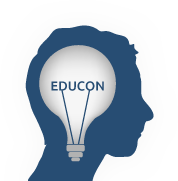Teaching STEM with Fiction
Has the balance and interdependence of an ecosystem ever been presented with more memorable clarity than in Richard Adams’ novel Watership Down? The Common Core asks teachers to distinguish between literary texts and informational texts, but is there really always a difference?
Stories are the most effective, enduring form of information exchange humanity has ever employed and there’s no reason the power of fiction should be kept out of STEM learning. When presented through literary passages, plots and metaphors, STEM material becomes more approachable by a wider spectrum of learners. Future scientists and engineers learn to communicate their expert understandings through accessible, narrative models rather than technical jargon. Art and science openly fortify and vitalize one another.
Step across those departmental boundaries and share that literary anecdote you use to present a logical principle! What’s that movie scene you show to illustrate a math concept? Which novel must be the guidebook for some deep science exploration? With literacy now recognized as a component of all learning, we need to share our discoveries, enthusiasms and even our vague inklings of the fiction texts that fertilize STEM.
In this conversation we will pool our literary-scientific insights and inspirations and then explore and analyze the titles by discipline, genre and narrative principle. The resulting bibliography of STEM fiction can then be used to schematize and better understand the modes, capabilities and likely sources of fiction for the study of STEM. Join in creating this pioneering resource of both material and practice!
Conversational Practice
This topic is in such an undeveloped state exactly because there has never been a space to have the conversation. In the event that broad and forward thinking teachers are not overflowing with contributions to the conversation, a framework such as the one below could be gently put in place.
1) Arrival Activity (10 minutes): contribute to a projected Google sheet… Col. 1: fiction work you’ve used to model a STEM principle/behavior/concept Example: Flatland for dramatizing 2 and 3 dimensional spaces Col. 2: a “rich text”, a work of fiction you believe could be worth reading in its entirety for a particular STEM exploration Example: Moby Dick for marine biology and ecology Col. 3: a work of fiction you love/hope to use in some way to teach STEM Example: The Maltese Falcon for …?
2) Present (3 minutes): - image, Scratch’s fundamental theatrical metaphor - drama: one of humanity’s oldest forms of teaching - the power of metaphor, the power of stories
3) Share Col. 1: fiction participants have used to model STEM material - Participants vote for the works of fiction they most want to hear about. - Individual contributors explain their practice. Others comment. - Note taker visibly records conversation on a new projected sheet: Title / STEM Topic / Use / Notes
4) Share Col. 2: “rich texts” for teaching STEM - Proceed as above with titles and information added to the same sheet.
5) Create Schema: organizing & understanding how texts support STEM - Participants suggest important top level elements of our texts, such as STEM areas to which a text applies, genre of text, mode in which the text is employed, etc. - Note taker records suggestions on projected word processing document. - Participants suggest methods of organizing our texts, such as lists and matrices (e.g.: mechanical vs biological, applied vs theoretical). - Note taker presents suggested schema on projected slideshow document. - Share hypotheses drawn from various schema. - Note taker records suggestions on projected word processing document.
6) Share Col. 3: using our favorite fiction to teach STEM - Participants brainstorm inspirations/suggestions for using beloved fiction.
7) Thanks much! Decide where & how to house and update our bibliography.
Conversation Links
-
Christina BrennanWilliam Penn Charter School
-
Paula WhiteAlbemarle County Public Schools
-
Dan BerkleyHudson HS of Learning Technologies
-
Steve Lynch
-
Erin McClureRandolph Central School District
-
David Johnson
-
Terri InloesAcademy School District 20
-
Justin AionWoodland Hills School District
-
LEV FRUCHTERStoryCode: Computer Programming through Literature & NYC DoE
-
Catharina EvansCarolina Day School
-
Maria MuhlbauerPioneer Middle School
-
Jennifer MuntGarrison Forest School
-
Jessica ShupikThe U School
-
Mary MurphyDouglas County School District
-
Sonia NelsonSt. Joseph's Preparatory School
-
Gordon SmithCodesters
-
Lucas DavisSchool District of Philadelphia
-
Kay Oddone
-
Francesca CantariniC.W. Henry Elementary School
-
Will EhrenfeldIBM
-
Tim ClarkeCA BOCES
-
Veronica Warwick
-
Robert MerithewThe Miami Valley School
-
Anne Taliaferro
-
Paige BurtonCarolina Day School
-
Digital Ready TeamNew York City Department of Education
-
Joni PecorJ.J. Flynn Elementary
-
Mimi Romeo
-
Leslie HealeySt. Mark's High School
-
Arlen KimmelmanClearview Regional HS @pseudandry
-
Lauren StuffCattaraugus-Allegany BOCES
-
Lee Finkelstein
-
Linda ConwayDouglas County School District
-
Holly DoePelham School District
-
Sara Frey
-
Ann Leaness
 EduCon 2.9
EduCon 2.9
No comments have been posted yet.
Log in to post a comment.